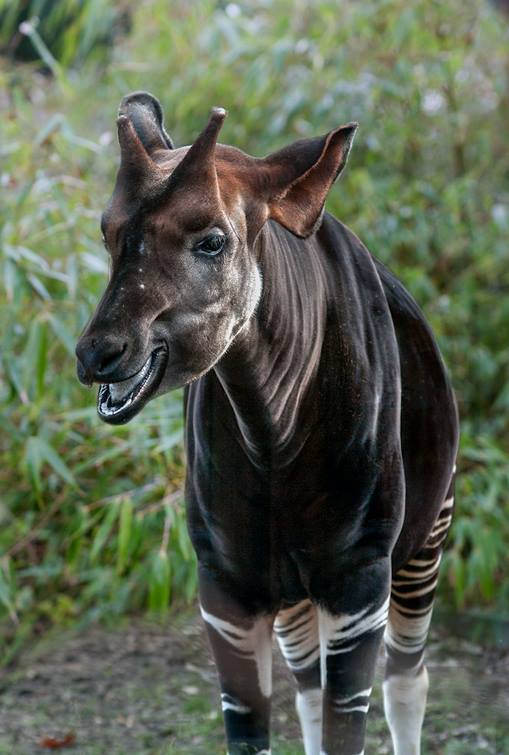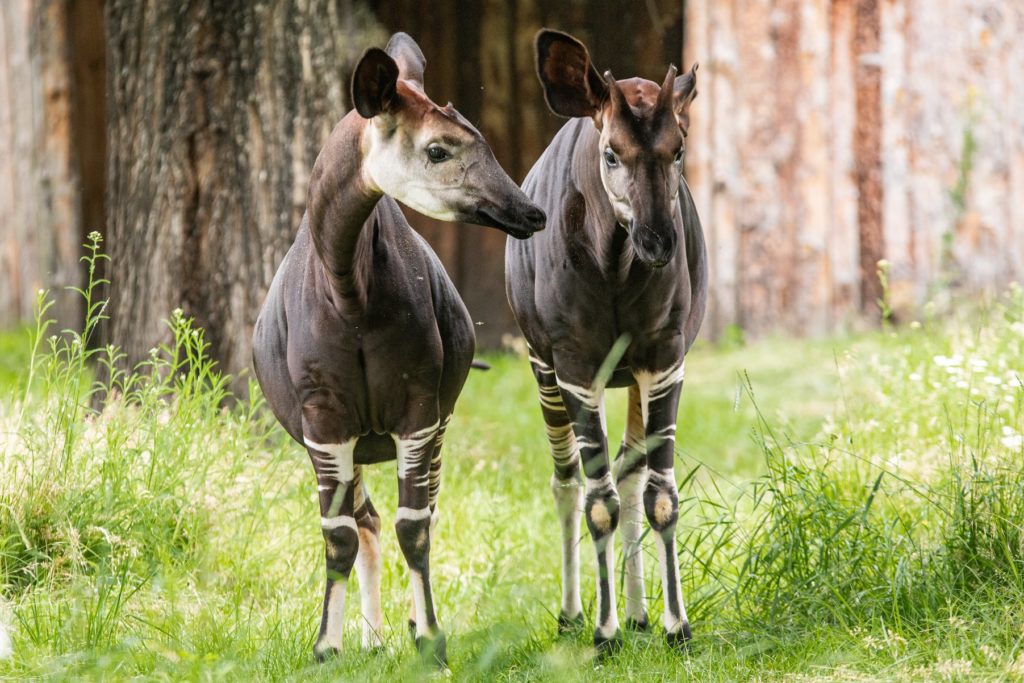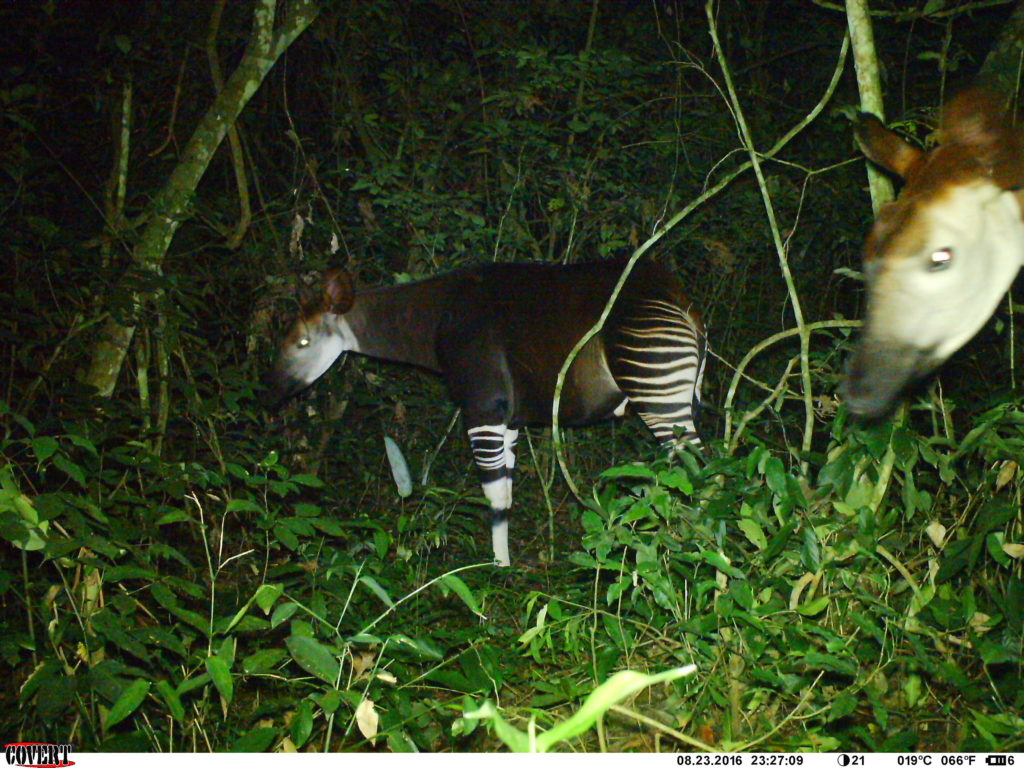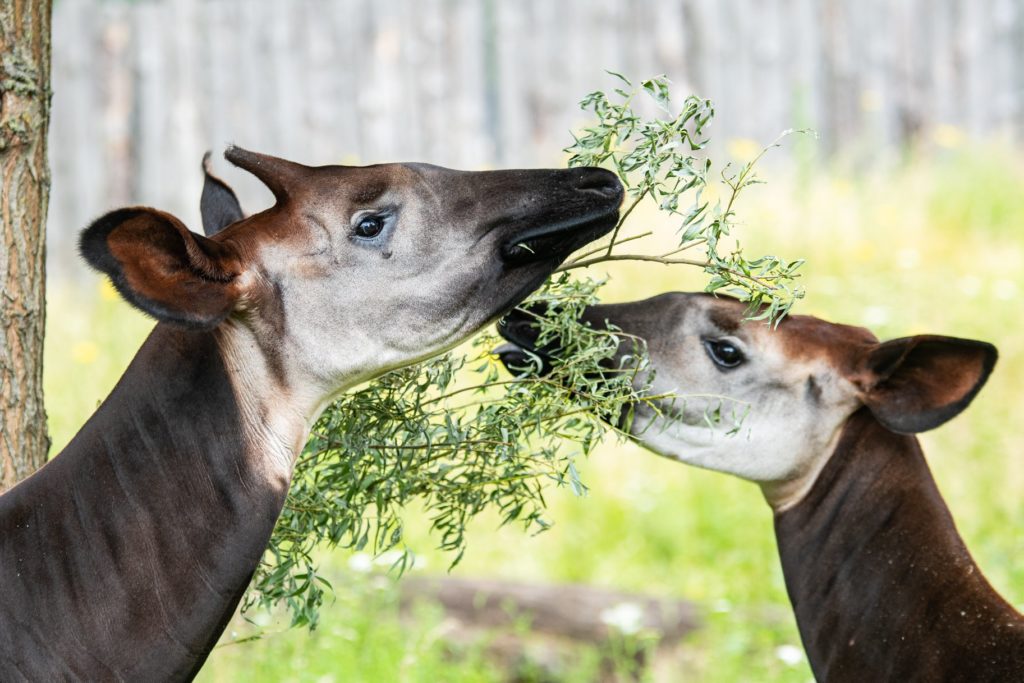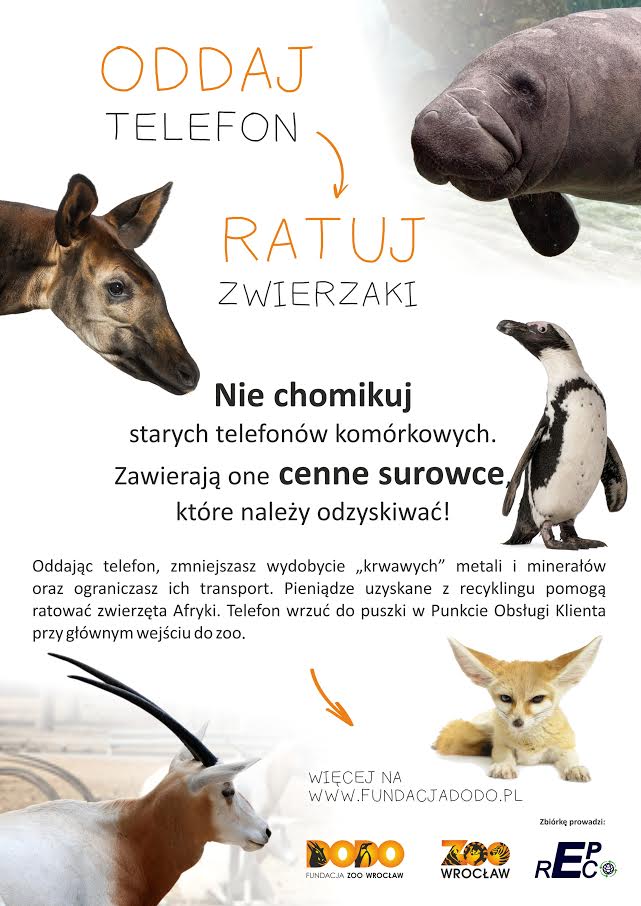Description
Okapi is an endangered species and its population continues to decline. The common ancestor of okapi and giraffes lived about 16 million years ago. This ancestor, known as Canthumeryx, had an elongated neck (according to a 2015 study published in the Royal Society Open Science Journal). After Canthumeryx, the family tree split into two branches, with giraffe ancestors on one side and okapi precursors on the other. While the ancestral necks of the giraffe grew longer over time, the animals on the okapi side had shorter necks. Okapi is one of the oldest mammals that survived on Earth – it is known in the Western world only from the beginning of the 20th century. It is a shy, elusive creature and almost impossible to be observed in the wild. For the Democratic Republic of Congo, which is a unique place with many endemic species, the okapi is a national and cultural symbol and has been protected since 1933.
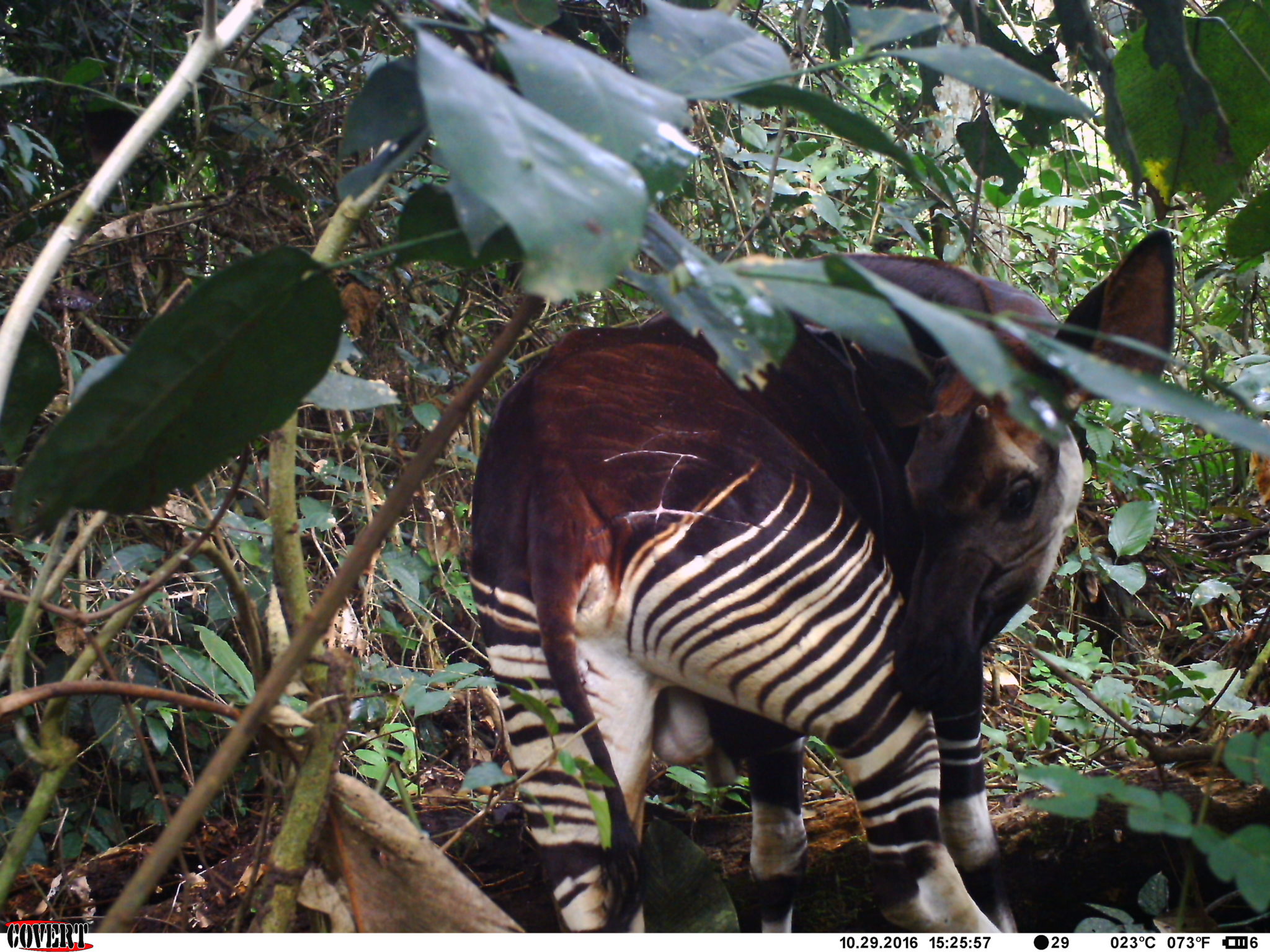
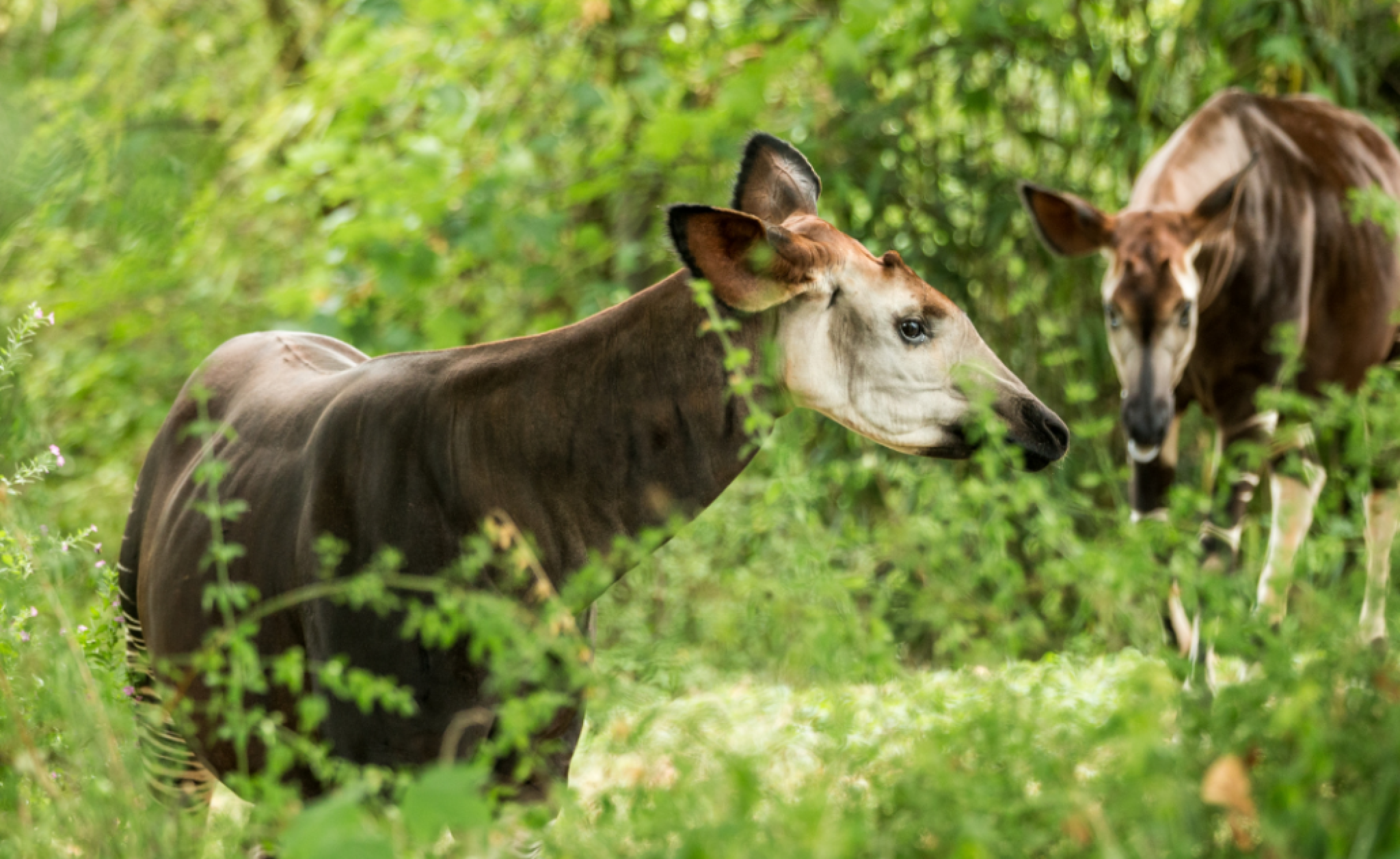
The most serious threat to this species is widely understood human activity. Okapi is completely dependent on the forest, and deforestation, along with poaching and mining, has brought the species “to the brink of the precipice.” The population has declined by more than 50% in just three generations (around 15 years). Okapi has been officially classified as “endangered” by the International Union for Conservation of Nature (IUCN).
What we do
We support the Okapi Conservation Project (OCP), which works in the heart of the Democratic Republic of Congo to protect the natural habitat of the endangered okapi and indigenous Mbuti pygmies living in the Okapi Wildlife Reserve. Designated as a World Heritage Site, the Reserve is one of the most biologically diverse areas in all of Africa. Its model programs in sustainability and stewardship promote the viability of the region’s biodiversity and survival of native species like the okapi, which is under increasing threat from habitat destruction and illegal human activities.
On this occasion, we would like to remind you about the action of collecting used mobile phones. Precious and rare metals are used in the production of phones. It is tantalum, gold, tungsten and tin. Their extraction increases and destroys the natural environment. Tantalum is used to make very small capacitors necessary for the operation of almost all electronic devices (including cell phones and computers). It is obtained from coltan ore mined in the Democratic Republic of Congo, the last place where okapi lives.
Please do not throw away your old cell phones! Recycle them, and thus you will contribute to a decline in demand for mining.
